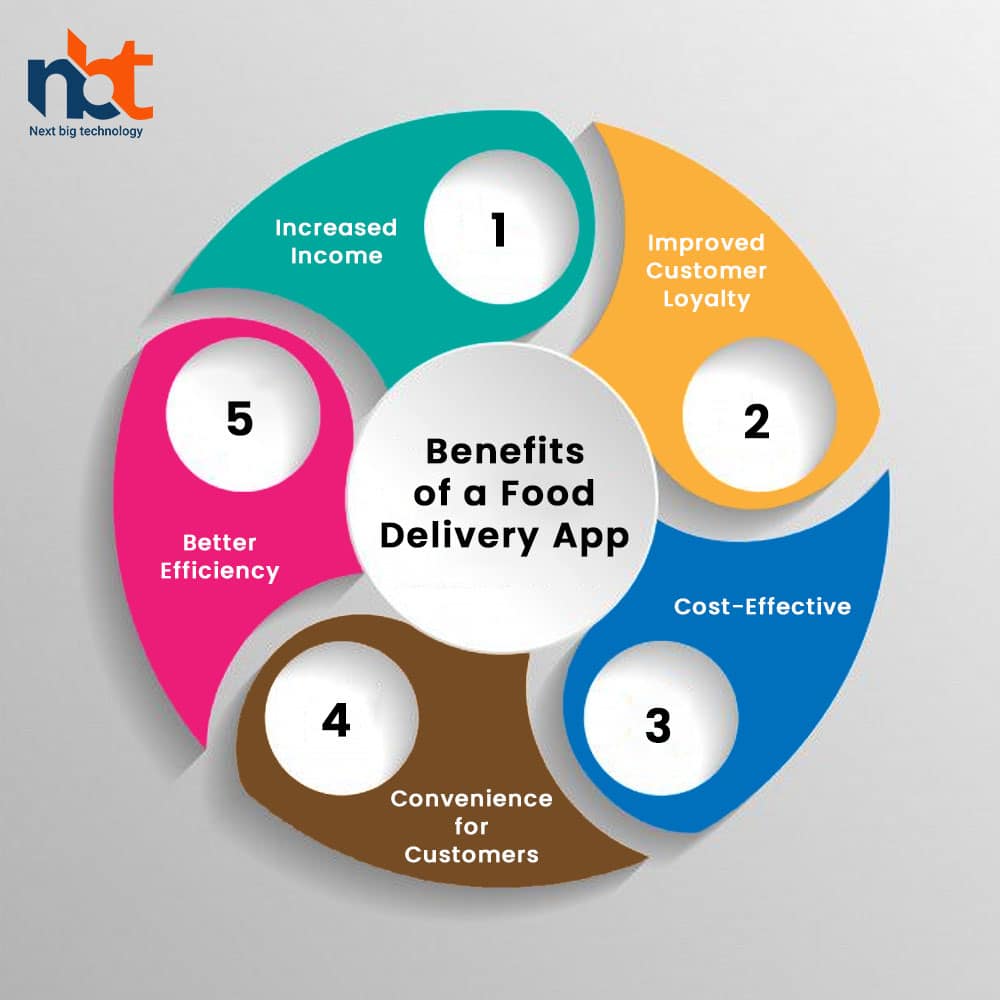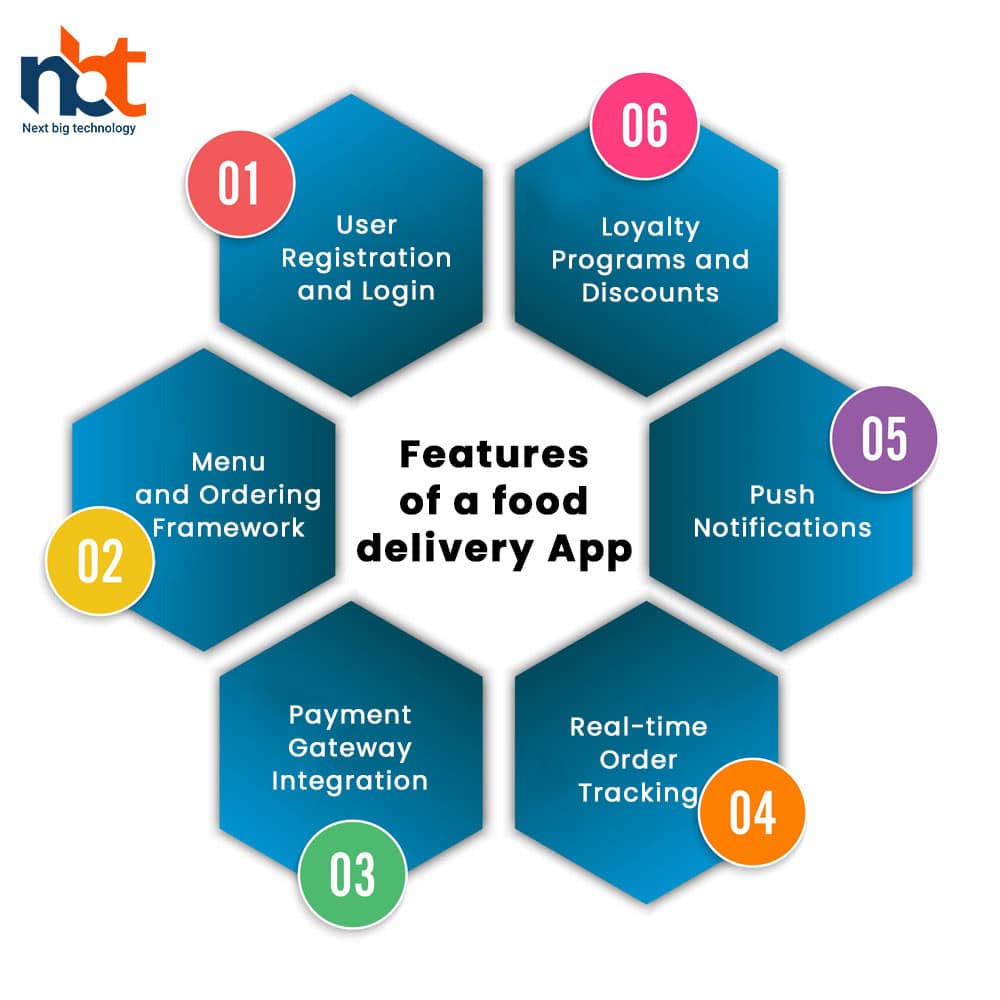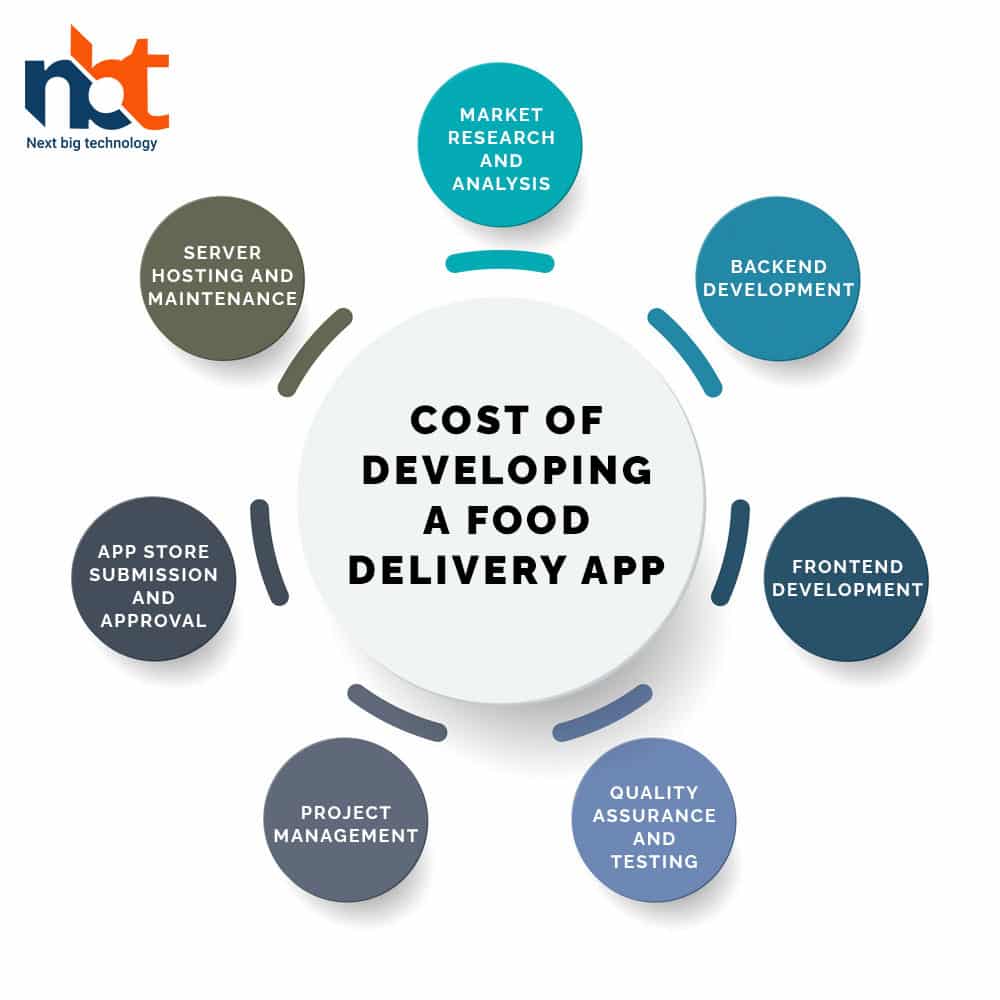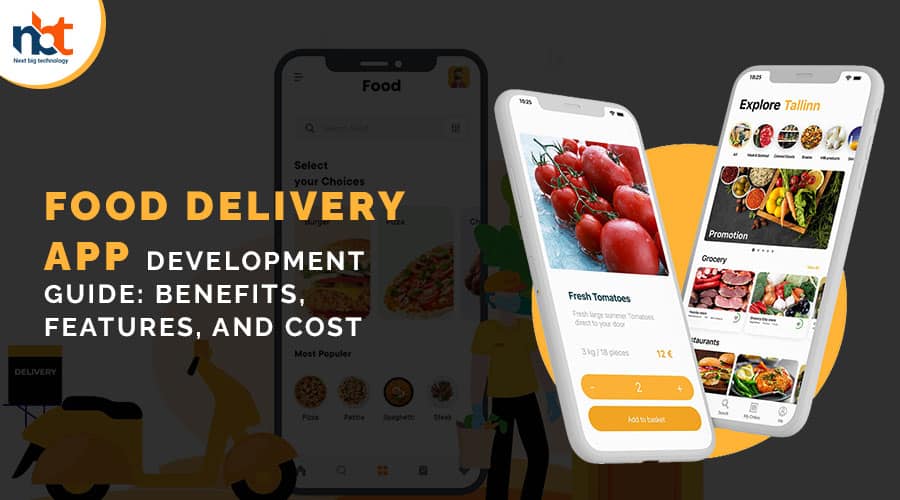Food delivery apps have become progressively well-known over the past long time, particularly since the Covid-19 widespread. They have been an incredible comfort to clients, permitting them to arrange food from their favorite restaurants and convey it to their doorstep. This comfort has made food delivery apps a favorite among buyers, driving numerous business people to consider creating their claim food delivery apps.
Creating a food delivery app includes a few stages: advertising, research and analysis, UI/UX design, backend and frontend development, testing, and launch. Each of these stages is basic to the success of the app.
This guide will examine the development process, benefits, features, and cost of creating a food conveyance app.
Table of Contents
Food Delivery App Development Process
The development process of a food delivery app includes a few stages that must be taken after for an effective result. Let’s see each organize in more detail:
1. Market Research and Examination
The primary stage of creating a food delivery app is to conduct market research and examination. This includes inquiring about your target gathering of people, distinguishing your competitors, and finding one-of-a-kind features you’ll offer to separate you from your competitors. It is fundamental to get your target audience’s needs and inclinations, as well as the qualities and shortcomings of your competitors.
2. UI/UX Design
Once you have completed market research and investigation, the other stage is UI/UX design. The design of your app is vital to its success because it decides how clients connect with it. A great design guarantees that your app is user-friendly, easy to explore, and outwardly engaging. The design should too be steady with your brand image and messaging.
3. Backend Development
The third stage of creating a food delivery app is backend development. This stage includes creating the app’s server and database, including APIs and integration with third-party services such as payment portals—usually the stage where you set up the server framework that supports your app’s functionality.
4. Frontend Development
Once the backend development is done, the other stage is frontend development. This stage involves creating the app’s client interface, which includes the app’s screens, features, and functionality. The frontend development should be steady with the UI/UX design and permit clients to explore the app effortlessly and discover what they are searching for.
5. Testing
The fifth stage of creating a food delivery app is testing. This stage includes testing the app for bugs, glitches, and other issues affecting its execution. Testing should be carried out on various devices and stages to guarantee that the app capacities correctly in numerous situations.
6. Launch
The ultimate stage of developing a food delivery app is launching the app on the App Store or Google Play Store. This includes submitting the app to particular stores and reviewing their guidelines for endorsement. Once the app is endorsed, it can be made accessible for download to users.
Also Read : Step-By-Step Working of a Food Delivery Application Explained!
Benefits of a Food Delivery App
Developing a food delivery app has numerous benefits both for restaurants and buyers. A few of the most amazing benefits of a food delivery app include:

1. Increased Income
A food delivery app can significantly increment the income of restaurants and food foundations. It permits them to reach a broader gathering of people and cater to customers who lean toward the comfort of home conveyance. Restaurants can save on overhead costs by using a food delivery app rather than opening a new restaurant or expanding an existing one.
2. Improved Customer Loyalty
A food delivery app can assist restaurants in constructing better connections with their clients. It allows them to offer personalized promotions and rebates, increasing customer dependability. Eateries can use the app to assemble customer input and move forward with their services based on customer feedback.
3. Cost-Effective
Developing a food delivery app is much more cost-effective than opening a modern restaurant or extending an existing one. Restaurants can use a food delivery app instead to spare on rent, utilities, and other overhead costs. This makes it an attractive alternative for business people who need to enter the food industry but may need more assets to open a physical eatery.
4. Convenience for Customers
A food delivery app gives customers convenience and adaptability. They can arrange food from their favorite restaurants at any time of the day without taking off from their homes. The app, too, gives customers real-time updates on their orders, allowing them to track their delivery and evaluate arrival time.
5. Better Efficiency
A food delivery app can assist restaurants to improve their efficiency by streamlining their processes. It allows restaurants to oversee orders, payments, and conveyances in one place, decreasing manual process requirements. This could save time and reduce mistakes, driving to distant better; much better; higher; stronger; and improved a much better client encounter.
Features of a food delivery App
A fruitful food delivery app should have several essential features that make it user-friendly and helpful for customers and restaurants. Here are a few of the basic features that a food delivery app should have:

1. User Registration and Login
The app should permit customers to enlist and make an account with their details, including name, email address, and contact information. This will allow them to arrange food and track their conveyances. Restaurants should, too, have the capacity to form an account and oversee their menu, orders, and payments.
2. Menu and Ordering Framework
The app should have a user-friendly menu framework allowing customers to browse and order food from their favorite restaurants. The menu should include pictures, depictions, and costs for each thing. Customers should have the alternative to customize their orders, such as selecting particular toppings or ingredients.
3. Payment Gateway Integration
The app should have a secure payment door integration that permits customers to pay for their orders using their favored payment methods, such as credit cards, PayPal, Stripe or mobile payments. The payment door should be secure and compliant with industry benchmarks to ensure customer data and avoid fraud.
4. Real-time Order Tracking
The app should give real-time order tracking that permits customers to track their orders from when they are placed to when they are delivered. This feature gives customers a sense of security and makes a difference in arranging their day around the estimated conveyance time.
5. Push Notifications
The app should have push notifications that give clients real-time updates on their orders, such as when the order is accepted, when the food is being prepared, and when it is out for conveyance. This includes keeping customers informed and engaged all through the order process.
6. Reviews and Ratings
The app should have an audit and rating framework that permits customers to leave feedback on their orders and rate the quality of the food and service. This feedback can help restaurants progress their services and give better customer encounters.
7. Loyalty Programs and Discounts
The app should have dependability programs and discounts that reward customers for their repeat trade. This could include advertising discounts on future orders or giving loyalty focuses that can be recovered for free food or other rewards.
Also Read : Major Reasons Why Online Food Delivery App is Gaining Popularity?
Cost of Developing a food delivery App
The cost of creating a food delivery app can change depending on a few factors, such as the app’s complexity, features, and server foundation needed. Here is a breakdown of the cost of creating a food delivery app:

1. Market Research and Analysis:
The cost of market research and analysis can shift depending on the sum of research required and the encounter of the analyst. The cost can extend from $1,000 to $10,000 or more.
2. Backend Development:
The cost of backend development can shift
significantly, depending on the app’s features’ complexity and the required server framework. The toll taken can run from $10,000 to $50,000 or more.
3. Frontend Development:
The cost of frontend development can, moreover, change depending on the complexity of the app’s plan and the number of screens required. The cost can extend from $5,000 to $20,000 or more.
4. Quality Assurance and Testing:
The cost of quality assurance and testing can vary depending on the number of devices and working frameworks on which the app should be tried. The cost can range from $5,000 to $10,000 or more.
5. Project Management:
The cost of comprehensive management can shift depending on the measure and complexity of the project. The cost can range from $5,000 to $15,000 or more.
6. App Store Submission and Approval:
The cost of app store accommodation and approval can shift depending on the app store and the nation where the app is being submitted. The cost can extend from $100 to $500 or more.
7. Server Hosting and Maintenance:
The cost of server hosting and maintenance can vary depending on the estimate and complexity of the app and the number of users it has to support. The cost can extend from $500 to $5,000 monthly.
Creating a food delivery app ranges from $20,000 to $100,000 or more, depending on the app’s complexity and the features included. It’s fundamental to work with a legitimate app development company that can give a detailed estimate of the cost and timeline for the project.
Also Read : Food Delivery App Development Cost in India
Investing in a food delivery App:
Investing in a food delivery app can be a smart commerce decision due to the considerable growth and potential of the market. The food delivery industry has undergone rapid expansion for a long time, driven by changes in consumer behavior and advancements in innovation. In this segment, we’ll explore the advertising measure and statistics for food delivery apps to understand why contributing to this industry can be beneficial.
Market Estimate
The worldwide food delivery market estimate is expected to reach $154.34 billion by 2023, with a compound yearly development rate (CAGR) of 11.51% from 2018 to 2023. The Asia-Pacific region is the biggest market for food delivery, accounting for over 50% of the worldwide market share. The North American showcase is also developing quickly, with a projected CAGR of 12.3% from 2021 to 2026.
The food delivery market is expected to reach $45 billion in the United States by 2025, with a CAGR of 11% from 2020 to 2025. The widespread has accelerated the development of the food delivery industry, with consumers progressively depending on delivery services due to social distancing rules and lockdowns. This trend is expected to proceed, with experts projecting that the food delivery market will develop further in the coming long time.
Statistics
Here are a few key statistics that highlight the development and potential of the food delivery industry:
Online food delivery deals reached $26.5 billion in the United States in 2020, up from $17.5 billion in 2019.
The worldwide online food delivery market is expected to grow at a CAGR of 15.4% from 2020 to 2027.
30% of U.S. grown-ups have used a food delivery app in the past year.
In 2020, DoorDash, Uber Eats, and Grubhub had a combined market share of 72.8% of U.S. food delivery deals.
The normal order value for food delivery within the United States is $32.
68% of consumers say they are more likely to select a restaurant that gives conveyance than one that does not.
These statistics illustrate the developing demand for food delivery services and the significant market share of the driving food delivery apps. By contributing to a food delivery app, businesses can tap into this growing market and reach a broader audience, giving convenience and value to their clients.
Also Read : Importance of food delivery app for your Restaurant business growth
Conclusion
A food delivery app can be a game-changer for both restaurants and customers, providing comfort, productivity, and cost investment funds. Creating a successful food delivery app requires cautious planning, market research, and collaboration with a reputable app development company. By consolidating basic features like user registration, menu and ordering framework, payment portal integration, real-time order tracking, push notifications, reviews and ratings, and loyalty programs and discounts, a food delivery app can give a consistent and enjoyable encounter for customers whereas making a difference restaurants reach a broader audience and develop their business.
Thanks for reading our post “Food Delivery App Development Guide: Benefits, Features, and Cost”. Hope its beneficial for you. Please connect with us to know more about Food Delivery portal development and Food Delivery App Development.


















